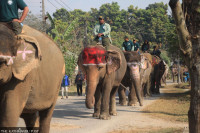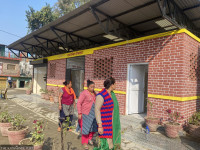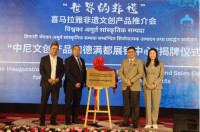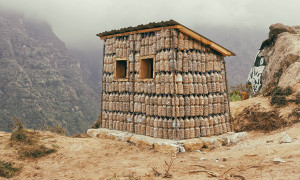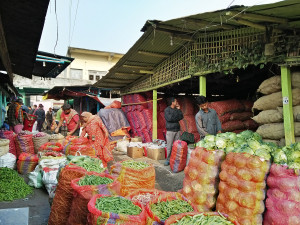Money
Koshi gets alternative crossing
On August 18, 2008, the Sapta Koshi River in eastern Nepal burst its eastern banks, 8 km north of the Indian border.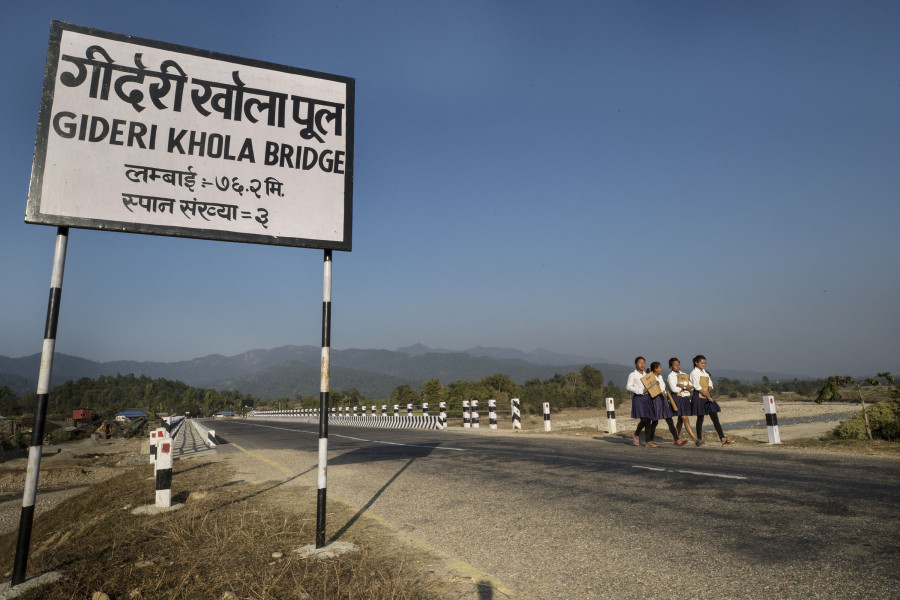
Sangam Prasain
On August 18, 2008, the Sapta Koshi River in eastern Nepal burst its eastern banks, 8 km north of the Indian border.
At its peak, the intensity of water force went up to 166,000 cubic feet per second (cusec) compared with the regular 25,744 cusec, setting a new course south—15-20 km wide and 150 km long. This caused massive flooding in Nepal and India.
The floods damaged hundreds of villages and over 200 people in Nepal and India were reported to have lost their lives. This flood is considered to be one of the costliest and deadliest natural disasters in Nepal’s history, according to a government report.
The Koshi flood caused significant destruction as the road connectivity between Nepal’s eastern districts and the rest of the country was cut off for months.
A month after the flood, when Dashain and Tihar festivals started, thousands of people were forced to face unexpected hardship while crossing the river. It was because; there was no alternative route to the East–West Highway across the Koshi Barrage, the country’s busiest road.
After 10 years, an alternative route has been constructed, thanks to the South Asia Sub-regional Economic Cooperation Road Connectivity Project, funded by the Asian Development Bank.
The 61.2 km road starts at Nadaha of Sunsari district connects the recently constructed Koshi Bridge at Chatara and passes through Rampur of Udayapur, Fattepur of Saptari and links with the East-West Highway at Kanchanpur.
The Rs2.31 billion project started in November 2014 and was completed last September, said Naresh Pradhan, project officer (transport) at the ADB.
“The new highway and bridge constructed over the Koshi River in Chatara will serve as an alternative to Koshi Barrage if there is flooding again or if the Koshi Barrage undergoes repair,” he said. “It’s a strategic road constructed after learning lessons from the 2008 Koshi floods.”
But for the people in Sunsari, Udaypur and Khotang, it has become a lifeline. It has not only increased people and vehicle movement but trade and commerce activities have also seen an uptick, he said. People’s life, particularly in Udayapur district,
was really hard in the past during the monsoon when travelling from their home to neighbouring places, because no bridges were there.
“Flash floods are very common here. Before the construction of the bridge over Koshi, it was really difficult for us to cross the river to travel to Dharan and other cities in the eastern region,” said Tilak Bahadur Rai, who lost his son to the river in 2013.
On July 16, 2013, two people were killed and around 15 others went missing when the boat capsized in the Saptakoshi river at Mainamaini-9, Udayapur. Their bodies were never recovered.
“Had there been a bridge, obviously that accident could have been avoided. Now, we have the bridge and no one will lose their children,” said Rai. “We have got a new life.”
Shyam Kumar Rai, a local at Belaka, Udaypur, said it used to take 5-6 hours to reach Dharan before the roads were constructed. “Now, the travel distance has been reduced to 2 hours.” In past years, even if the villagers were sick or bitten by snakes, their survival chances were very thin, he said. “Now we have scores of vehicles plying the road.”
Road and economic activities
Since the construction of the road and bridges, the once sleepy villages in Udaypur, have been bustling with activities.
According to the project, after the construction of the road, the number of commercial vehicles has increased significantly. There were no three-wheeler tempos before the completion of the road. But now, 48 such tempos ply the road daily.
853 units of buses, mini buses, trucks, jeeps, tractors and two-wheelers ply the road daily. There were only 87 vehicle units before the road was constructed.
Along the 33.20 km section of Udaypur-Fattepur-Kanchanpur road, 3-4 new bazaars have emerged after the road was constructed. Farmers supply their agro products to these bazaars, said Shyam Kumar Rai. “As the demand is growing, new enterprises, fisheries and poultry farms are gradually opening up.” There are four new fuel pumps along the road corridor.
While the road connectivity and new bridge over Koshi has brought cheer to people in Udaypur district, it has affected traders of Fattepur in Saptari, the main market place for people in Udaypur and Khotang districts.
“Due to the road access, it has provided multiple choices for people in Udaypur and Khotang. Now, they don’t have visit Fattepur because markets are mushrooming at their own doors,” said Kumar Poudel, a hardware trader at the Fattepur bazaar. “Farmers also supply their goods in the local market at competitive prices due to lower transportation costs.”
The project has also identified the road network as a potential product to promote religious tourism. The planned Koshi corridor links the road with renowned religious places like Baraha Chhetra, which is situated 6 km away from the Koshi bridge in Chatara. Other religious areas that the road can establish vital links with are Dantakali-Pindeswar and Haleshi Mahadev of Diktel.
 An auto rickshaw crosses the Koshi bridge at Chatara along the East-West Highway Road connectivity project. Photo courtesy: Asian Development Bank
An auto rickshaw crosses the Koshi bridge at Chatara along the East-West Highway Road connectivity project. Photo courtesy: Asian Development Bank




 19.12°C Kathmandu
19.12°C Kathmandu

